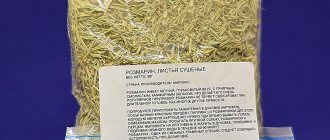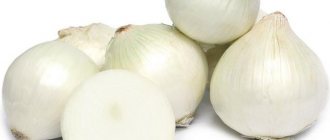Features of mint storage
Methods to help keep the plant in good condition are varied and simple. However, knowledge of some nuances when laying for the winter must be taken into account. They are as follows:
- The plant has its most beneficial properties at the end of June - beginning of July, that is, during the period of active flowering, so harvesting for future use must be planned for this period.
- Young stems with an abundance of aromatic leaves, which contain a high concentration of essential oils, are suitable for storage.
- It is recommended to collect mint after the dew disappears, but no later than 11 a.m.
Only mint collected during the specified period of time will delight you with its minty taste and delicious smell. The most successful storage methods include drying the plant or freezing it.
You can harvest mint with whole sprigs or individual leaves.
How to preserve mint for a long time?
In gardens and summer cottages, for everyday use during the season, peppermint is most often grown, which can be stored fresh in small quantities for several days. It will not lose its aroma and will retain its beneficial properties if the right conditions are created. The integumentary tissue of mint leaves is thin and delicate, so moisture is lost quickly - cut branches wither and lose their juiciness in 2-3 hours. In this regard, after harvesting, it is necessary to provide the plant with optimal conditions immediately, without delay.
Preparation of raw materials
Collected plants need careful preparation before storing them in any way you like. The algorithm for preparing raw materials is almost the same for all recipes.
To get a good result you need:
- sort through the stems and leaves, removing dry fragments, weeds, random debris and insects;
- rinse the plants under running water and drain in a colander;
- spread on a towel and wait until excess moisture is removed;
See also
Medicinal properties and contraindications of field mint, description and care
Read
If only the leaves are to be stored, they must be removed from the stems. It is better to do this with your hands, without using metal objects - pruners, scissors, knife. This will prevent the possibility of an oxidative process that provokes early spoilage of products.
How to store fresh mint
Collected mint quickly withers, as a result of which it loses not only its original freshness, but also its beneficial qualities.
Storing in the refrigerator is the best option to keep the product fresh for a week.
Having prepared the emerald greens in the manner described above, they keep them in the refrigerator using simple tricks:
- Place the plant stems in a jar of water. By changing the water daily, you can keep your greens fresh for up to 10 days.
- Place a bunch of mint in a plastic container with a tight lid that does not allow air to enter. Duration of use is 5-7 days.
- Spread the stems in a thin layer on a damp cloth and roll it into a roll. Shelf life: 3-4 days.
These recipes allow you to briefly prolong the good state of mint. However, it quickly loses color saturation. In addition, other products have the ability to absorb odors released by the plant.
Storage methods
There are many ways to store greens, the main thing is to do the procedure correctly so that all the qualities are preserved as best as possible. The plants are frozen, tinctures are made from it, or they are dried and stored in a container. Drying is done in bunches, or the sheets are laid out separately. The bundles are usually hung.
At room temperature
Mint leaves retain their properties well at room temperature, but the mint is washed and dried before storing. The main thing is to keep the temperature at the same level and not allow air humidity to increase. Sudden changes can cause destruction of the leaves and they will wither. After the procedure, the leaves are kept fresh.
In a refrigerator
Greens keep well for 5 days in a jar of water. To prevent moisture from escaping, cover the container with mint with a transparent bag. For storage up to 10 days, choose food containers. Before that, the greens are washed and dried. Harvesting is carried out in dry weather. Take 2-3 year old plants. A third of the stem is cut off, as the leaves there are the softest and youngest.
See also
How to store Jerusalem artichoke at home in winter, rules and best methods
In the freezer
This method allows you to preserve nutrients and later use the greens for culinary and medicinal purposes. To do this, take 5-6 branches and put them in regular bags. The bags are then placed in the freezer. The next day, the greens are placed in one bag so that it does not take up much space.
You can also chop the mint before freezing. The chopped plant is placed in containers.
It is not necessary to cut mint; the herb can be stored in whole leaves. It depends on what the workpiece requires.
The medicinal plant is frozen in ice cubes, which preserves the tissue well and does not allow the mint to lose its properties. The cubes are put into bags and hidden in a chamber.
Dried
Drying is carried out in dry weather and the temperature is maintained at 22-25 degrees. The leaves are washed and laid out on cloth in separate sheets or twigs. You can also cut into small pieces. To dry, mint is tied into bunches and hung. Choose a place protected from direct sunlight. The plant dries out in a few days.
Growing at home
To always have fresh mint on hand, the plant is planted in a pot. To do this, take a twig and place it in water, wait until it takes root. Then the seedling is transplanted into the soil and watered.
In water
Store chopped mint or leaves in jars. A tincture is made from water. You can also add sugar. But this method has its drawbacks. Although the greens retain their pleasant aroma, they cannot be stored for longer than 3-4 days, as the product begins to deteriorate.
Before the procedure, the leaves are washed and cut. But it depends on the final product and its future use. Pour warm water over the mint and add sugar. Afterwards the container is placed in the refrigerator.
In the towel
After drying, the plants are wrapped in a paper towel. This method will help protect the mint from excess moisture, exposure to sunlight and provide dryness and warmth. Choose a larger towel. In this case, you should not cut the mint, as this will complicate transportation later.
See also
Rules and methods for storing freshly squeezed juice in the refrigerator
In ice cubes
After the mint has been washed and sorted, it is divided into leaves. Then add water and place the plant in the molds. Next they are sent to the freezer. At subzero temperatures, water will quickly freeze, and the product inside the ice will stay fresh longer.
After you get the mint, you can start cooking. In this form, it is great for salads, as well as brewing tea and infusions. Such preparations are especially relevant for the winter. Greens will help restore vitamins and make you feel energetic. Due to its medicinal properties, it is often used as a cure for colds and flu.
In a cool place
To avoid putting the container in the refrigerator, place it in a cool place, but it is important to keep the temperature at the same level. Humidity should also not be high.
mint sugar
To do this, you only need two products: mint and sugar. This sweet addition will complement desserts well. The product has a well-defined sweet aroma. It is often added to coffee and tea to add flavor. You can also add mint sugar to sauces and dressings, sprinkle it on berries and yogurts. Add this product at the end of cooking so that it does not lose its taste.
Take fresh mint, wash it and cut it. Throw away the twigs immediately, make sure you don’t get any limp leaves, otherwise the sugar will quickly spoil. After 30 grams of mint, mix with 150 grams of sugar. This makes one serving. Gradually the mint will soak in the juice and turn into puree. Store sugar in well-closed containers. This storage method does not take much time, and the final product can be used beneficially.
Drying mint
An old, proven method of storing plants is drying. Its use allows you to preserve all the taste, color and menthol smell. There are several drying options:
- natural - in a well-ventilated place;
- using a microwave oven;
- drying in the oven.
Drying in the oven and microwave reduces the preparation time, however, as a result of heat treatment, the product loses a significant amount of beneficial properties; essential oils simply evaporate during such treatment.
Natural air drying allows you to get a truly amazing result, provided that all the requirements of the preparatory stage described above are met.
The remaining steps will not take much time:
- it is necessary to collect mint in small bunches;
- tie the lower part of the stems tightly with strong thread or twine;
- hang mint bouquets with inflorescences down so that all the substances are concentrated in the leaf area.
See also
Description and properties of Moroccan mint, planting and care rules
Read
The room should be well ventilated without direct sunlight on the plant.
After the stems and leaves have completely dried, the resulting raw material must be placed in a dry glass container (preferably dark in color), tightly closed and placed in a dark place.
This preparation can be stored for more than a year without losing its properties. Tea, meat dishes, dessert are the main uses of dried mint.
Preparing and freezing mint
1. Rinse the plant thoroughly. 2. Wait until it is completely dry. 3. Place in a plastic container or plastic bag and place in the freezer.
Drying will help achieve maximum shelf life.
1. Rinse the plant thoroughly. 2. Tie in bunches and hang in a dark, dry place. 3. Once completely dry, place the mint in a glass container and close with a lid.
Important! There is no need to try to speed up the drying process by placing bunches of mint in the sun or near the stove.
Dried mint is used to make tea and as a seasoning for food.
Fresh mint is used to make mojitos. To extend the shelf life of the product, this method is used for this purpose.
1. Rinse the plant. 2. Separate the leaves. 3. Take ice cube trays and fill them with water. 4. Place mint leaves in molds filled with water. 5. Place it all in the freezer.
Freezing a plant
You can prepare mint for the winter using the freezer. When frozen, mint, as when dried, retains all its qualities for 7-8 months.
Whole leaves
Well-prepared greens are placed in a plastic bag with a sealed clasp.
If it is desirable to freeze only the leaves, they must first be removed from the stem by hand.
An important requirement: there should be no moisture on the leaves, and air should be removed from the bag using a cocktail straw.
Whole branches
Freezing leaves and stems is suitable for decorating holiday dishes. This mint is also used to prepare infusions and decoctions used for cosmetic and medicinal purposes.
The branches of the plant are placed in a plastic bag, from which the air is removed. Then the bag is tightly rolled into a tight tube and sent to the freezer.
Finely chopped
Convenient packaging of products is more suitable for preparing first courses.
The greens are pre-chopped with a knife or in a blender, placed in small containers and frozen.
The disadvantage of this method is that it is difficult to separate the required amount of product.
Harvesting mint for the winter
The best season to harvest mint for the winter is July and August.
In most regions of the country, mint is about to bloom at this time or is already crowned with pinkish or pale lilac inflorescences. During this period, the foliage, tops of shoots and flowers accumulate the largest amount of essential oil and other active substances for which the crop is so valued. The best raw materials can be obtained:
- from plants 2–3 years;
- in the morning or evening hours, when there is no dew on the plants;
- in dry, cool weather.
Cutting is carried out at 1/3 of the length of the stem, since its hard part is not suitable for winter storage, but it can still produce new growth before the end of the season.
Before storing the collected greens in the refrigerator or before drying or freezing the mint , they are carefully sorted, removing dry, damaged parts of the plant and impurities, washed and always dried. If you want to keep mint fresh for the winter, place the prepared greens in bunches in containers with a small amount of water, cover the top with film or a transparent plastic bag and transfer to the refrigerator.
Mint shoots or leaves separated from the stems can be wrapped in paper towels and placed in resealable bags or containers.
In this form, mint “bunches” and green leaves retain their freshness and original appearance for up to 4 weeks, but then nature takes its toll. Greens lose color and elasticity, moisture and nutrients evaporate.
How to store mint if it is impossible to preserve plants in the refrigerator for a long time? You can use one of the oldest methods - drying mint, which in this form will retain both the aroma and valuable oils.











